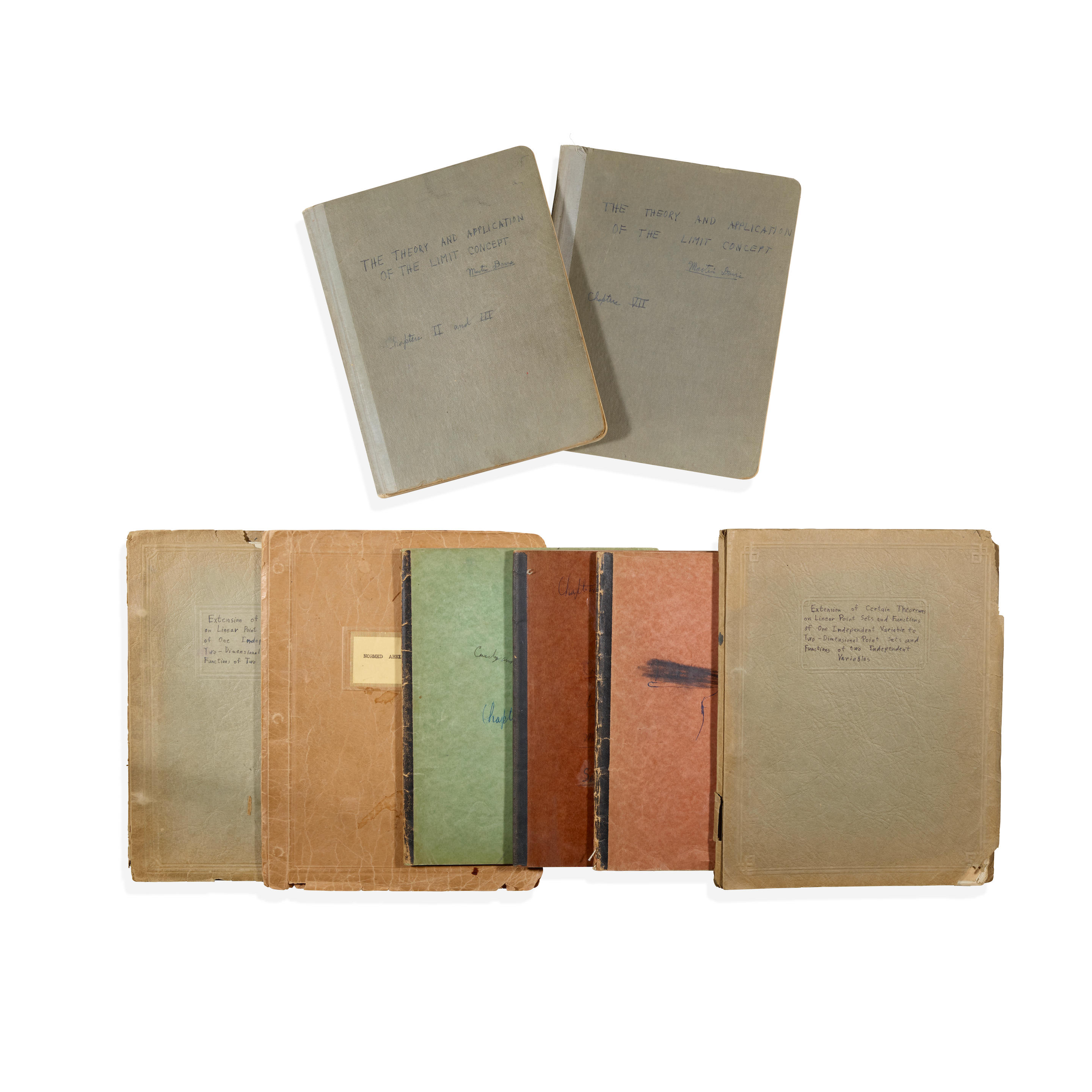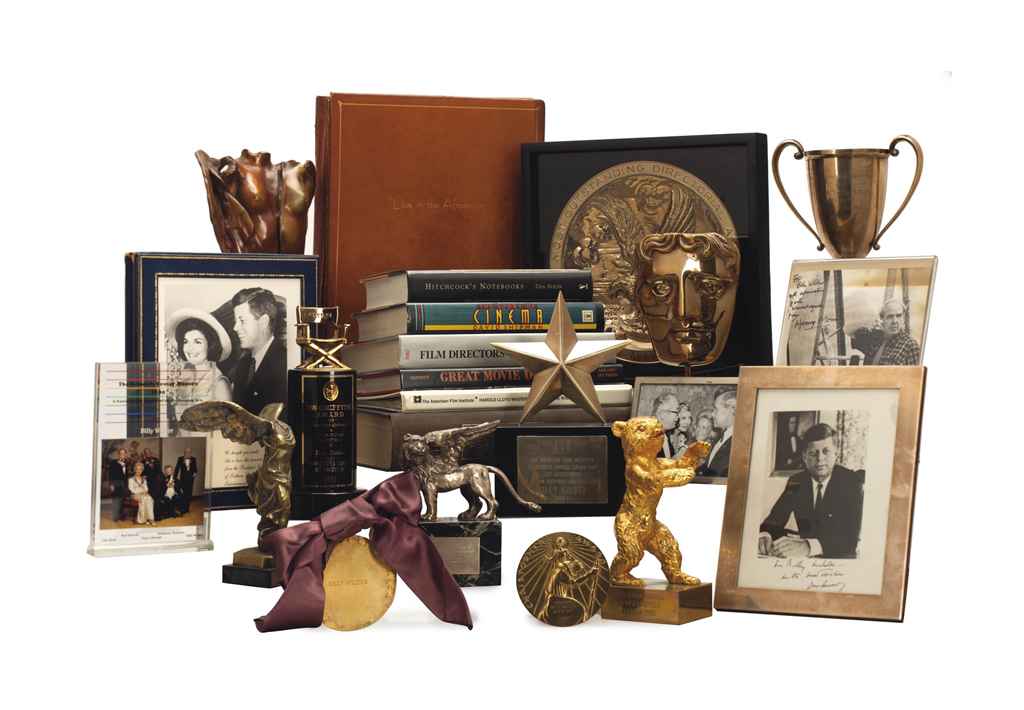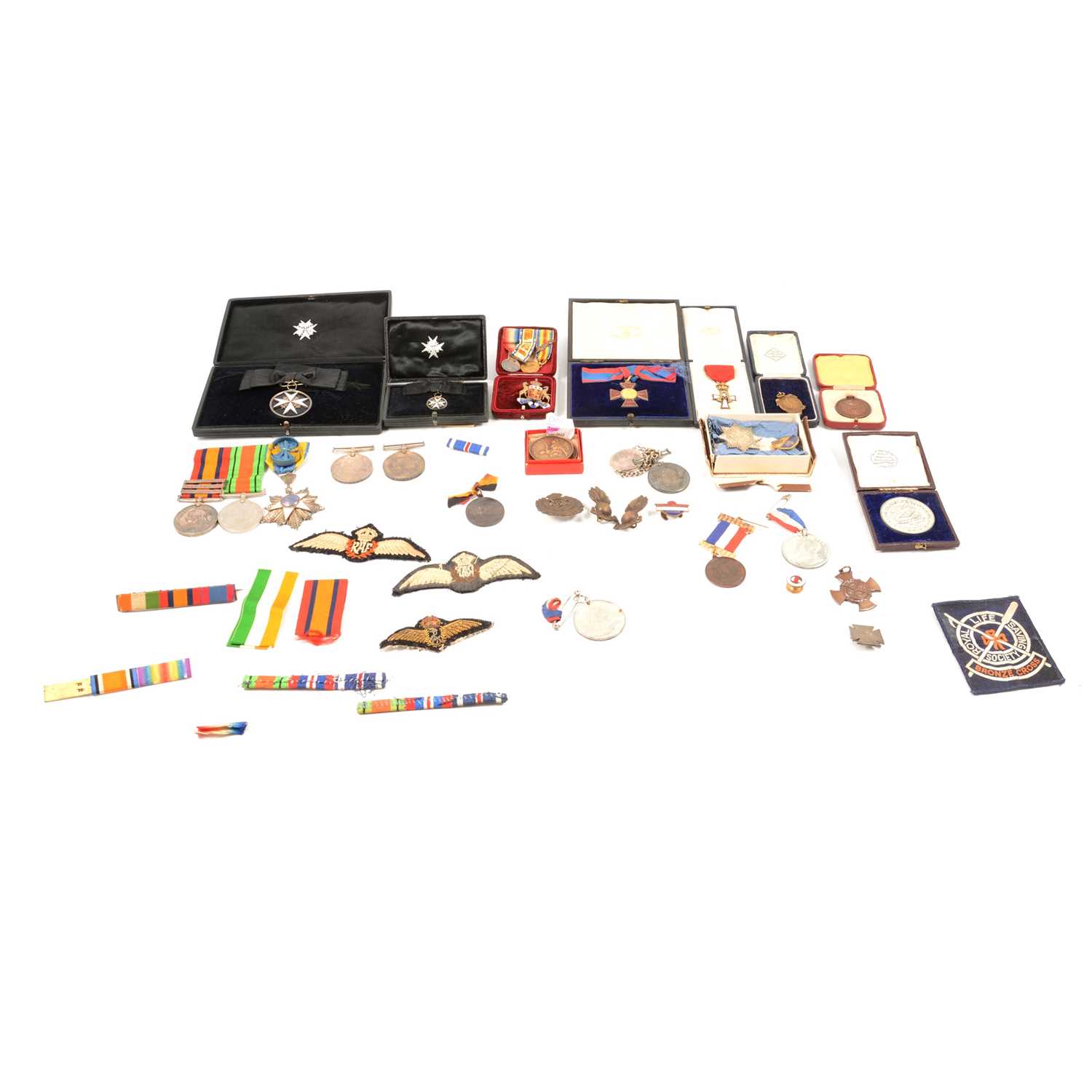A Collection of Awards to the R.F.C. and R.A.F. formed by Wing Commander Bill Traynor A fine Second World War A.F.M. group of five awarded to Flight Lieutenant C. Beveridge, Royal Air Force, who flew daylight sorties and night-fighter operations in Blenheims of No. 219 Squadron at the height of the Battle of Britain Air Force Medal, G.VI.R. (522807 F./Sgt. C. Beveridge, R.A.F.); 1939-45 Star; Africa Star; Defence and War Medals, generally good very fine (5) £3000-3500 Footnote A.F.M. London Gazette 1 January 1944. The original recommendation states: ‘This airman has shown exceptional skill as a Flight Engineer. He was employed in that capacity on one of the first direct flights from the U.K. to Egypt, and from Egypt to the U.K. His devotion to duty, both during flights, and on the ground at overseas staging posts where he had to depend on himself and his resources, has set a fine example.’ Charles Beveridge, who was born in June 1915, entered the Royal Air Force as an Aircrafthand in August 1935, but was later re-mustered for training as an Air Gunner. Posted to No. 219 Squadron, a Blenheim unit then based at Catterick and commanded by Squadron Leader J. H. “Jimmy” Little, D.F.C., in August 1940, he quickly gained operational experience, not least when the Squadron moved south to Redhill, and thence to Tangmere. So, too, of the thin divide between survival and death, when he, and his pilot, the Canadian John Carriere, came to grief on 6 August - their Blenheim hit some power cables and plunged into a local river, but ‘fortunately, both crew members suffered relatively minor injuries.’ Quite a few of Beveridge’s earlier sorties would have been of the daylight kind, but No. 219 had in fact been trained-up as a nightfighter unit, and in September 1940, with the arrival of Beaufighters, it reverted to its previous role. And from these early days of radar-enhanced operational night sorties emerged some notable ace-partnerships, not least Flying Officer J. G. Topham and Flight Sergeant H. W. W. Berridge, both of whom would have been well-known to Beveridge. So, too, the colourful “Kiwi”, Squadron Leader A. E. Clouston, A.F.C., who arrived at 219’s base in October 1940 - he had recently been grounded for trying to bring down an enemy aircraft with his propellor after running out of ammunition. For his own part, and as verified by 219’s records, Beveridge completed around 40 or 50 operational sorties in the period August 1940 to November 1941, the majority of them as a recently qualified Radar / Navigator in the Squadron’s Beaufighters out of Tangmere, and latterly under a new C.O., Wing Commander (afterwards Marshal of the Royal Air Force) T. G. “Killer” Pike, who quickly gained ace-status and a brace of D.F.Cs; see From Dusk Till Dawn, The Story of No. 219 Squadron 1918-1957, by T. W. Kitching, for further details. With a well-merited “Battle of Britain” clasp under his belt, and having qualified as a Flight Engineer, Beveridge next joined No. 511, a Liberator unit of Transport Command, but his duties were far from mundane, involving as they did numerous return trips from North Africa to Lyneham, via Gibraltar, and occasional stops at Malta - in March 1943 his aircraft airlifted 30 people, including women and children, from the besieged “George Cross Island”. As also verified by 511’s records, his duties included a number of V.I.P. ferrying flights, not least at the time of the Teheran Conference at the end of 1943, the first occasion that Churchill, Roosevelt and Stalin were all present - thus passengers such as Air Chief Marshal Sir Arthur Tedder, Generals Dill, Ismay and Alanbrooke, and Admiral Sir Andrew “ABC” Cunningham, in addition to political heavyweights such as Eden. Beveridge was awarded the A.F.M. Remaining in the Royal Air Force after the War with an extended commission - he had been appointed Pilot Officer in August 1943 - he was advanced to Flight Lieutenant in February 1947 and was placed on the Retired List in Septe
A Collection of Awards to the R.F.C. and R.A.F. formed by Wing Commander Bill Traynor A fine Second World War A.F.M. group of five awarded to Flight Lieutenant C. Beveridge, Royal Air Force, who flew daylight sorties and night-fighter operations in Blenheims of No. 219 Squadron at the height of the Battle of Britain Air Force Medal, G.VI.R. (522807 F./Sgt. C. Beveridge, R.A.F.); 1939-45 Star; Africa Star; Defence and War Medals, generally good very fine (5) £3000-3500 Footnote A.F.M. London Gazette 1 January 1944. The original recommendation states: ‘This airman has shown exceptional skill as a Flight Engineer. He was employed in that capacity on one of the first direct flights from the U.K. to Egypt, and from Egypt to the U.K. His devotion to duty, both during flights, and on the ground at overseas staging posts where he had to depend on himself and his resources, has set a fine example.’ Charles Beveridge, who was born in June 1915, entered the Royal Air Force as an Aircrafthand in August 1935, but was later re-mustered for training as an Air Gunner. Posted to No. 219 Squadron, a Blenheim unit then based at Catterick and commanded by Squadron Leader J. H. “Jimmy” Little, D.F.C., in August 1940, he quickly gained operational experience, not least when the Squadron moved south to Redhill, and thence to Tangmere. So, too, of the thin divide between survival and death, when he, and his pilot, the Canadian John Carriere, came to grief on 6 August - their Blenheim hit some power cables and plunged into a local river, but ‘fortunately, both crew members suffered relatively minor injuries.’ Quite a few of Beveridge’s earlier sorties would have been of the daylight kind, but No. 219 had in fact been trained-up as a nightfighter unit, and in September 1940, with the arrival of Beaufighters, it reverted to its previous role. And from these early days of radar-enhanced operational night sorties emerged some notable ace-partnerships, not least Flying Officer J. G. Topham and Flight Sergeant H. W. W. Berridge, both of whom would have been well-known to Beveridge. So, too, the colourful “Kiwi”, Squadron Leader A. E. Clouston, A.F.C., who arrived at 219’s base in October 1940 - he had recently been grounded for trying to bring down an enemy aircraft with his propellor after running out of ammunition. For his own part, and as verified by 219’s records, Beveridge completed around 40 or 50 operational sorties in the period August 1940 to November 1941, the majority of them as a recently qualified Radar / Navigator in the Squadron’s Beaufighters out of Tangmere, and latterly under a new C.O., Wing Commander (afterwards Marshal of the Royal Air Force) T. G. “Killer” Pike, who quickly gained ace-status and a brace of D.F.Cs; see From Dusk Till Dawn, The Story of No. 219 Squadron 1918-1957, by T. W. Kitching, for further details. With a well-merited “Battle of Britain” clasp under his belt, and having qualified as a Flight Engineer, Beveridge next joined No. 511, a Liberator unit of Transport Command, but his duties were far from mundane, involving as they did numerous return trips from North Africa to Lyneham, via Gibraltar, and occasional stops at Malta - in March 1943 his aircraft airlifted 30 people, including women and children, from the besieged “George Cross Island”. As also verified by 511’s records, his duties included a number of V.I.P. ferrying flights, not least at the time of the Teheran Conference at the end of 1943, the first occasion that Churchill, Roosevelt and Stalin were all present - thus passengers such as Air Chief Marshal Sir Arthur Tedder, Generals Dill, Ismay and Alanbrooke, and Admiral Sir Andrew “ABC” Cunningham, in addition to political heavyweights such as Eden. Beveridge was awarded the A.F.M. Remaining in the Royal Air Force after the War with an extended commission - he had been appointed Pilot Officer in August 1943 - he was advanced to Flight Lieutenant in February 1947 and was placed on the Retired List in Septe














Try LotSearch and its premium features for 7 days - without any costs!
Be notified automatically about new items in upcoming auctions.
Create an alert